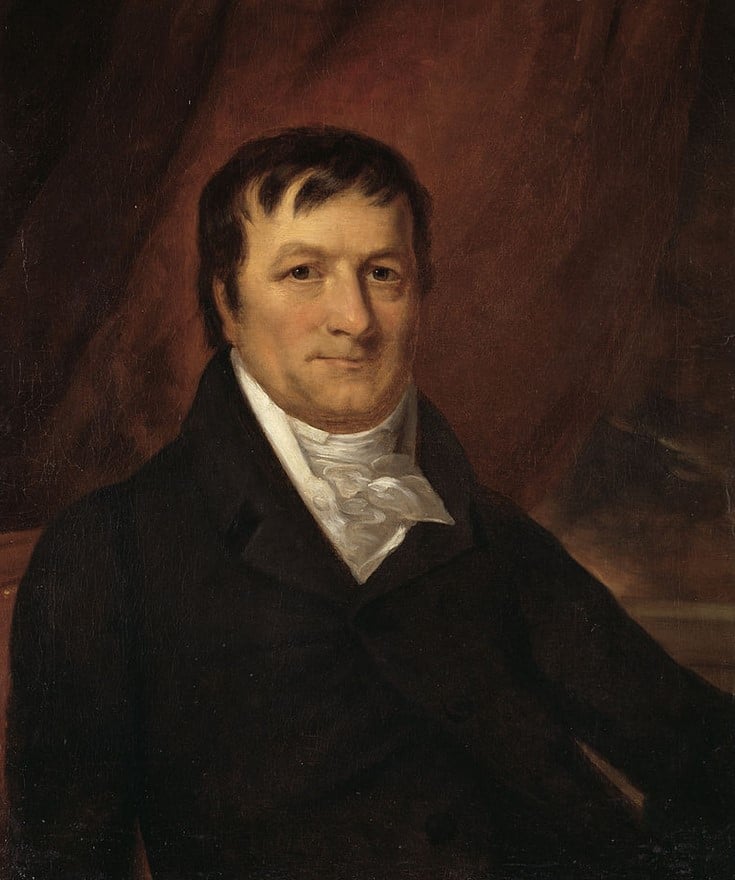What is John Jacob Astor’s Net Worth?
John Jacob Astor was a European-born American businessman and investor who had a net worth of $25 million at the time of his death in 1848. After adjusting for inflation, that’s the same as around $121 billion in today’s dollars. Astor was the FIRST American to become a USD millionaire and for much of his adult life he was the richest person in America, perhaps the world. According to a ranking of the richest people in America done by Moses Yale Beach in 1847, a year before Astor’s death, Astor’s $25 million fortune was by far the biggest. The other largest fortunes were one or two million dollars at most.
He made his fortune by building a fur trade monopoly in North America, exporting opium to China, and investing in real estate in New York. Notably, Astor was the first multimillionaire in United States history.
Estate
Astor left half of his fortune to his second son, William, as his eldest was sickly and mentally unsound. He placed the other half into a generation-skipping trust. By the time the third generation of Astors inherited the trust, it had grown to be worth over $200 million. Astor’s great-grandson, John Jacob Astor IV, was the richest person in the world in 1912. Tragically, Astor IV died on the Titanic. Upon his death, his 20-year-old son Vincent became one of the richest people in the world.
Early Life
John Jacob Astor was born as Johann Jakob Astor on July 17, 1763 in Walldorf in what was then the Electoral Palatinate of the Holy Roman Empire, now Germany. He was the youngest of four sons of Maria and Johann Sr., with his older brothers being George, Henry, and Melchior. As a child, Astor worked in his father’s butcher shop and as a dairy salesman. When he was 16, he moved to London, England to work with his brother George at an uncle’s piano and flute manufacturing business. While there, Astor learned English and anglicized his name.
Fur Trading and Opium Trading
In 1784, Astor arrived in the United States, settling in Baltimore. On his voyage over, he had a chance meeting with a fur trader that prompted him to join the North American fur trade. After spending some time working at his brother Henry’s butcher shop in New York, Astor began purchasing raw hides from Native Americans and reselling them at great profit. In the late 1780s, he opened his own fur goods shop in New York. The next decade, after the Jay Treaty between the United States and Great Britain opened up several new markets in North America, Astor made a contract with the North West Company and began importing furs from Montreal and shipping them to Europe. By the dawn of the 19th century, he had made over $250,000 and was among the leading figures in the fur trade. Astor soon began trading opium to China, increasing his fortune.
Although the Embargo Act of 1807 disrupted his fur trading business, in 1808 Astor established the American Fur Company with the permission of President Thomas Jefferson. Astor went on to establish a number of subsidiaries, eventually creating a fur trade monopoly in the Great Lakes and Columbia River regions. After his fur trading business was disrupted by the War of 1812, he turned to the opium smuggling trade and smuggled tons of opium to China, and then to Britain. Astor returned to fur trading in 1817, and continued to grow his monopoly. In 1822, he established the Robert Stuart House on Mackinac Island in Michigan as the headquarters of the American Fur Company. The island soon became a major hub for the fur trade, with Astor’s commercial connections reaching across the entire globe.
(Public Domain)
Real Estate
Astor started buying land in New York City in 1799, acquiring substantial holdings along the waterfront. After making major profits from his trades to China in the early 19th century, he became more ambitious and began investing in New York real estate. In 1803, Astor purchased a 70-acre farm on which he constructed the Astor Mansion at Hellgate. Around the same period of time, he bought considerable holdings from the disgraced Founding Father Aaron Burr.
In the 1830s, Astor sold his interests in the American Fur Company and his other ventures and bought and developed large tracts of real estate in the burgeoning area of Manhattan. Having correctly predicted the rapid growth of New York City, he continued purchasing land beyond the existing city limits. Astor seldom built on his land, instead leasing it to others. Due to his ventures, he became the first multimillionaire in the United States.
Personal Life and Death
In 1785, Astor married Sarah Cox Todd, the daughter of his landlady. Together, they had eight children: Magdalena, Sarah, John Jr., William, Dorothea, Henry, Eliza, and an unnamed son who died shortly after his birth.
A member of the Freemasons, Astor served as Master of Holland Lodge #8 in New York City. Later, he served as Grand Treasurer of the Grand Lodge of New York. From 1837 to 1841, he was the president of the German Society of the City of New York.
Astor passed away on March 29, 1848 at the age of 84. At the time of his death, he was the wealthiest person in the United States.
All net worths are calculated using data drawn from public sources. When provided, we also incorporate private tips and feedback received from the celebrities or their representatives. While we work diligently to ensure that our numbers are as accurate as possible, unless otherwise indicated they are only estimates. We welcome all corrections and feedback using the button below.

